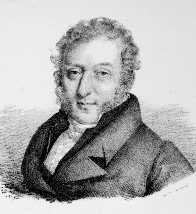

FERDINANDO CARULLI
9thFebruary 1770 --- 17thFebruary 1841
Last Updated on 2022
By Steven Ritchie
And now for the Music

My thanks to Garesu for the music below.
New (3655)"Serenade, No.1, Opus.96". Sequenced by Garesu. New (3654)"Serenade, No.2, Opus.96". Sequenced by Garesu. My thanks to Pak Homin for the music below.
New (3653)"Serenade, No.3, Opus.96". Sequenced by Pak Homin. (760)"Five Romances for two Guitars". Sequenced by Trent Hanson (843)"Siciliana". Sequenced by R.Fennimore (837)"Opus.120, Andante in C, No.1". Sequencer Unknown
(814)"Opus.120, Andante in C, No.2". Sequenced unknown
(262)"Andante in G". Sequencer unknown

If you done any Classical pieces of say for example, Delius, mozart, and so on etc,
please email them to the classical music site with details to
"classical (@) ntlworld.com" written this way to stop spammers
just remove spaces and brackets for email address, thank you.

Visitors to this page --

Back to Classical Midi Main Menu click "HERE"